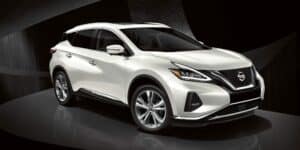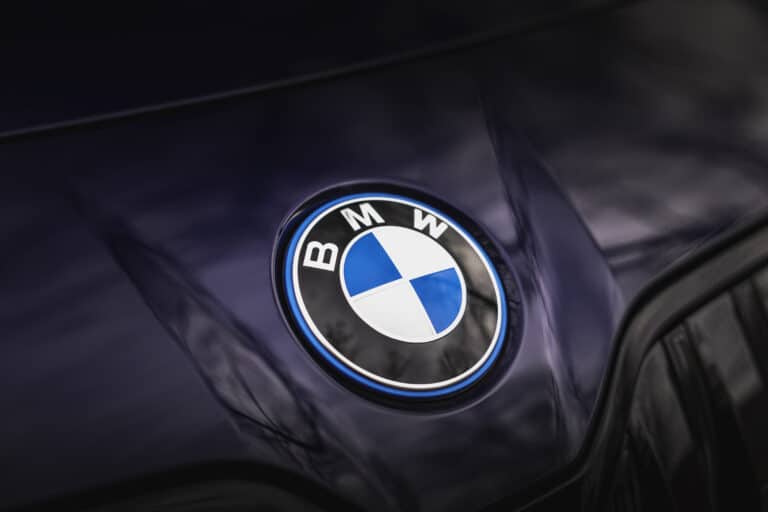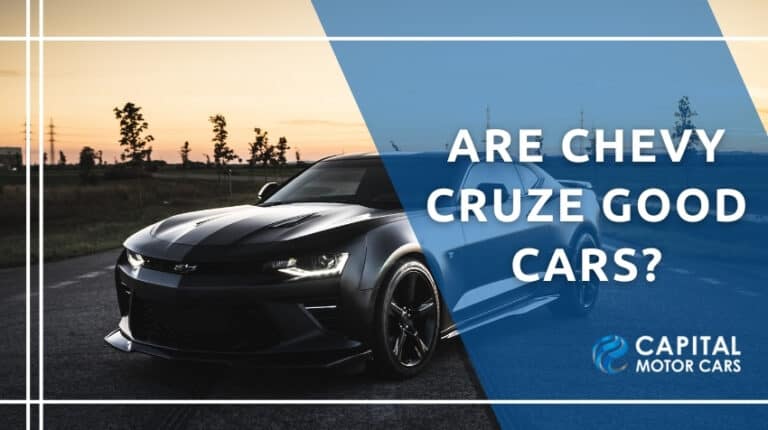The world of car enthusiasts is captivated by the idea of turbocharging. The prospect of more horsepower and better performance makes people wonder: Can you put turbo in any car? To answer this question, it is necessary to comprehend the mechanics behind a turbocharger and how it improves the performance of an internal combustion engine.
Jump To Section
What is a Turbo, and How Does it Work?
A turbocharger is a device that enhances the power of an internal combustion engine by injecting additional air into the combustion chamber. When integrated into a naturally aspirated engine, a turbocharger allows the combustion chamber to absorb extra air, which is accomplished by the spinning motion of the turbo. The expelled exhaust gases initiate this rotation.
The turbocharger has two halves connected by a shaft, housing two turbines. As the hot exhaust gases exit the engine, they spin one turbine, coupled to another. This second turbine draws in and compresses outside air, increasing the air-to-fuel ratio in the combustion chamber. The result is a significant boost in power and efficiency, with a well-implemented turbocharger capable of adding anywhere from 75 to 150 horsepower to your engine.
The compressed air, heated by contact with the exhaust gases, mixes with fuel to produce the magic. In carbureted engines, a set amount of fuel is automatically taken in with the air. In engines that use fuel injection, the computer control unit adjusts to fit the boost pressures, ensuring optimal performance and efficiency.
The exhaust gases exit through a separate turbine, which spins at high speed. To manage their impact on torque, the two turbines are connected to turn in opposite directions, balancing each other out. The speed of the turbocharger’s spin is directly tied to the engine speed, meaning a faster-spinning engine equates to a faster-spinning turbocharger, resulting in increased power and pressure.
A turbocharged engine is an engineering marvel, utilizing exhaust gases to enhance the air intake process and elevate the vehicle’s overall performance. However, not all vehicles are compatible with turbocharging due to the intricacies of their design.

Can You Put Turbo In Any Car?
It is possible to add a turbo to any engine that doesn’t have one. However, the success of this process depends on careful preparation and following the necessary steps. This includes upgrading the ECU, enhancing the clutch system, overhauling the fuel system, and upgrading the internal engine components. By following this comprehensive checklist, you can ensure a smooth integration of forced induction.
Performance and Trade-offs
After implementing the upgrades, your engine will probably produce more horsepower. However, this enhanced performance comes with a cost – a faster rate of engine wear and tear. The turbocharged experience has its trade-offs, which require a balance between power and longevity.
The Role of Intercoolers
The success of a turbocharged system largely depends on the use of intercoolers. When turbos spin, they produce heat, which requires a cooling mechanism to be in place to cool the compressed air before it enters the combustion chamber. Intercoolers are crucial in this process as they ensure the turbocharged air remains at an ideal temperature. Their incorporation is essential to avoid overheating and maximize the turbocharged engine’s efficiency.
What Should You Do Before Installing Turbo In Your Car?
1. Engine Control Unit (ECU) Upgrade
One crucial step in installing a turbocharger is to replace the entire Engine Control Unit (ECU) or integrate a new unit that works well with the existing one. This is because an adequately coordinated ECU is necessary to regulate the increased airflow and fuel delivery of turbocharging. By tuning the ECU meticulously, the engine can perform at its best without compromising its integrity.
2. Clutch System Enhancement
Installing a turbocharger in your car can generate more torque than the stock clutch system can handle. Thus, upgrading the clutch system is vital to ensure a strong connection between the engine and transmission. This upgrade will prevent slipping under increased load and protect your drivetrain components from premature wear and tear.
3. Fuel System Overhaul
To meet the increased fuel demand of a turbocharged system, it is necessary to replace the stock injectors and fuel pumps with higher-flow counterparts. This modification guarantees that the fuel delivery aligns with the tuned parameters of the turbo system. A balanced fuel system is crucial for avoiding lean conditions and possible engine damage.
4. Internal Engine Components Upgrade
Although a turbocharger can undoubtedly enhance the output power of a sufficiently strong engine, it is vital to consider the potential strain it can cause to the internal components. Therefore, it is recommended to upgrade the pistons, rods, and camshafts to ensure the engine can withstand the increased stress and forces generated by forced induction. This proactive step will prevent the risk of severe engine damage or failure.
5. Exhaust System Adaptation:
When a turbocharger is installed, it affects how exhaust flows through the system. It is important to use larger diameter pipes in the exhaust system to handle this change. This modification allows for the efficient removal of exhaust gases while reducing back pressure. As a result, the turbocharger can perform optimally, improving the engine’s overall efficiency.
Turbocharging is a complex plug-and-play process. The steps above form a complete checklist, emphasizing the intricate coordination between different components to create a harmonious balance of power and reliability. By carefully addressing these aspects before adding a turbocharger to your vehicle, you can ensure a thrilling and long-lasting turbocharged driving experience. Proceeding with caution ensures that the newly gained power does not come at the expense of your engine’s health.
Different Types of Turbos
When it comes to turbocharging, it’s essential to understand that not all turbos are the same. Various types of turbos cater to specific engine characteristics and driving preferences. Choosing the proper turbo for your vehicle is crucial to getting the most out of forced induction and achieving the best possible performance.

Are There Different Types of Turbochargers?
Indeed, there are several types of turbochargers available in the market. These may include:
1. Single Turbochargers
- Sequential Turbochargers: In a sequential turbocharging system, there are two turbochargers of different sizes. The smaller one, often called the primary turbocharger, operates at lower engine speeds to provide quick response and eliminate turbo lag. As engine speed increases, a valve opens, directing exhaust gases to the larger secondary turbocharger for increased power at higher RPMs.
- Twin-scroll Turbochargers: This design features a divided turbine housing with two separate passages for exhaust gas to flow into the turbine wheel. It helps to minimize interference between exhaust pulses, improving efficiency and reducing turbo lag.
2. Twin Turbochargers
- Parallel Twin Turbos: Two identical turbochargers operate in parallel in this setup. Each turbocharger is responsible for compressing air for a specific set of cylinders. This configuration helps balance power across a wide range of engine speeds.
- Sequential Twin Turbos: Similar to the sequential setup in a single turbocharger, sequential twin turbos consist of two turbos of different sizes. The smaller turbo initiates the boost at lower RPMs, and as the engine speed increases, the larger turbo is engaged for additional power.
3. Variable Geometry Turbochargers (VGT or VNT)
These turbochargers have movable vanes in the turbine housing, allowing for adjusting the angle of the vanes. This feature enables optimization of the exhaust gas flow, improving response and efficiency across different engine speeds.
4. Electric Turbochargers
Electric turbochargers incorporate an electric motor to drive the compressor wheel, eliminating traditional exhaust-driven turbines. This design provides rapid response and allows for better control of boost pressure.
5. Twincharger System
Some engines feature both a supercharger and a turbocharger, combining the immediate power delivery of a supercharger with the efficiency of a turbocharger. This setup is often referred to as a twincharger system.
What Are The Brands Of Turbos That Are Available?
- Garrett Turbochargers are highly regarded for their durability and have been a prominent player in the market for a long time. They offer various turbochargers, including multiple models within each series. The Garrett T25 series, for instance, is a popular choice among turbo enthusiasts.
- BorgWarner is another reputable brand in the world of turbochargers, with a long-standing history. Known for its extensive product line, BorgWarner features several series, such as the T40, T60, and T160, all popular among turbo enthusiasts.

What Is The Cost Of Adding A Turbo To A Car?
If you’re looking to boost your car’s performance by adding a turbo, there are several things you need to consider regarding the cost. Like any other upgrades you may make to your vehicle, adding a turbo is a complex and multi-faceted process that can influence the overall price. These are the factors influencing the cost:
Existing Turbocharger
If your car is already equipped with a turbocharger that requires replacement or upgrading, you can expect the cost to be significantly lower. This is because replacing an existing turbocharger is less time-consuming for mechanics and incurs lower parts and supplies expenses. Therefore, it is often the more cost-effective option to go for.
Naturally Aspirated Engines
Add a turbocharger if you have a naturally aspirated engine and want to increase its horsepower. This will cost you somewhere between $500 and $2,000, depending on whether you opt for a new or used (or remanufactured) turbocharger. However, it’s essential to remember that the turbocharger cost is just one part of the total expense.
Forced Induction System
You must install a forced induction system if you want to add a turbocharger to a naturally aspirated engine. This will require you to purchase an adapter kit for the turbocharger and ensure all components work together correctly. Keep in mind that the cost of the forced induction system will add to the overall cost of the upgrade.
Cost After Installation
You may incur additional costs after installing a turbocharger to your naturally aspirated engine or upgrading your existing one. It is essential to get professional engine tuning done to ensure optimal performance. Calibrating fuel injectors to match the increased airflow from the turbocharger is a crucial step. Although some may consider a DIY approach, it is recommended to invest in professional tuning to avoid potential damage or inefficiencies.
Overall Price
The overall cost of adding a turbo to your car varies significantly depending on the car model, individual circumstances, and available resources. The cost range can go from around $500 to $5,000. It is crucial to balance securing a reasonable price and ensuring high-quality workmanship.
The ultimate goal is to make this investment effective and efficient, avoiding unnecessary expenses for a suboptimal outcome. Choosing the right balance ensures that the turbocharged experience aligns with your expectations and enhances your vehicle’s performance.
Capital Motor Cars Is Here To Help
If you are seeking a reliable car consultant who can expertly guide you through the complex process of assessing your needs, preferences, and driving conditions, look no further than Capital Motor Cars. Our experienced professionals are ready to provide insightful advice and personalized recommendations tailored to your specific requirements. Contact us today to begin the journey of enhancing your automotive experience.









